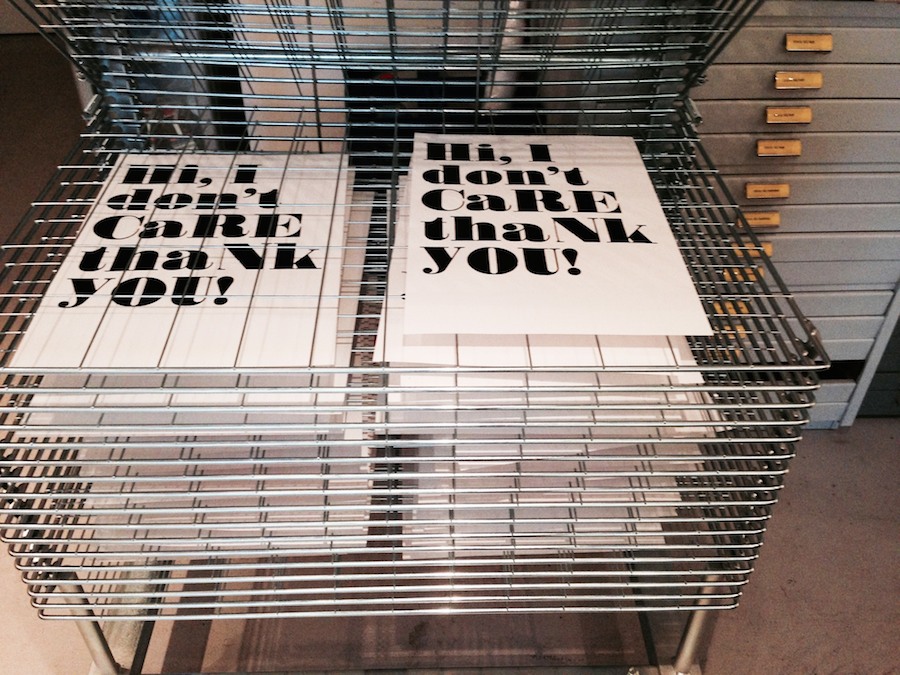Article
A tale from the print shop

Once upon a time a space between words was a piece of metal that would make your hands rough and filthy. Today it is the little flashing line travelling on screen when pressing the space key. But there is a place where you can still experience what it was like back in the days, when letters were actual analogue items.
Since most of us colleagues never experienced this era, we went to that place: it is the print shop of Erik Spiekermann. Right across from our Berlin office, but far enough from the noise of Potsdamer Straße, you can find Gallery P98a in a charming courtyard.
Numerous proof presses, the famous Heidelberger Tiegel, a Grafix, two FAG 510, a Korrex Berlin, a Korrex Nürnberg, a Korrex Frankfurt – did I lose you here? – and even more typefaces take over the space.
Despite Erik’s enormous collection of wooden and metal typefaces, the relatively limited selection leads to invention. It is easy to choose from five fonts out of a case. It is hard to choose from an entire digital font library. One quick glimpse into a drawer full of letters leads to a decision. Who would want to be faced with a full glyph table?
“Not this one, this one or this one … these are brand new … meaning old!”, Erik shouts. “And make sure to clean up after yourselves.”
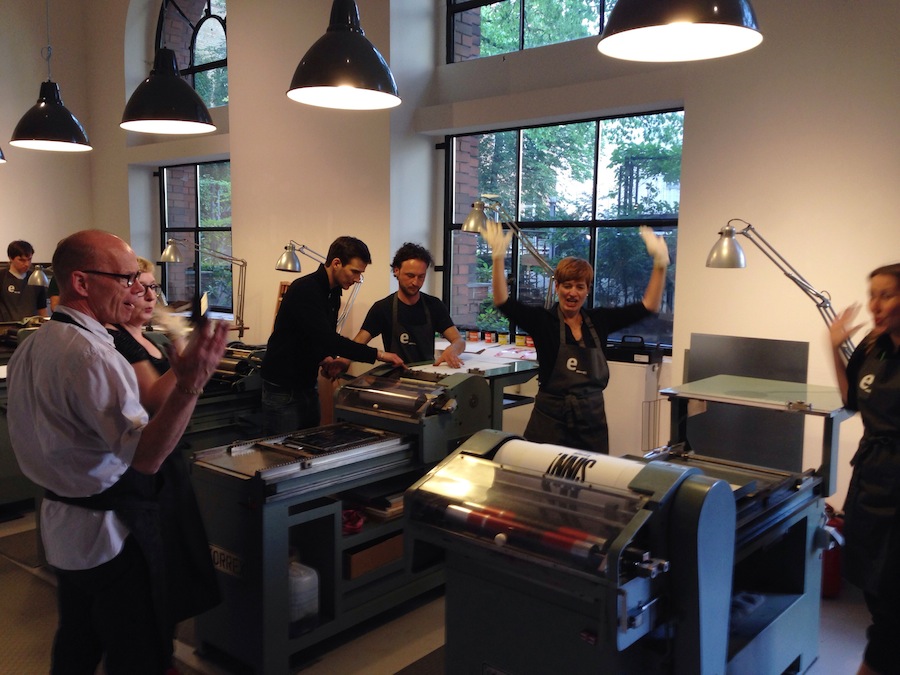
Of course, things did not use to be better in the olden days. We did not experience the hustle and bustle in a printing house at the time of going to press. We had three hours to come up with an idea, to select a typeface and to get a basic understanding of setting type for a poster. And to clean up after ourselves.
Erik’s initial nervous condition made him continuously asking if everything was still okay – after all, this was a new experience for each of us. But it is still unsure if his concern was directed towards his beloved machines or towards us.
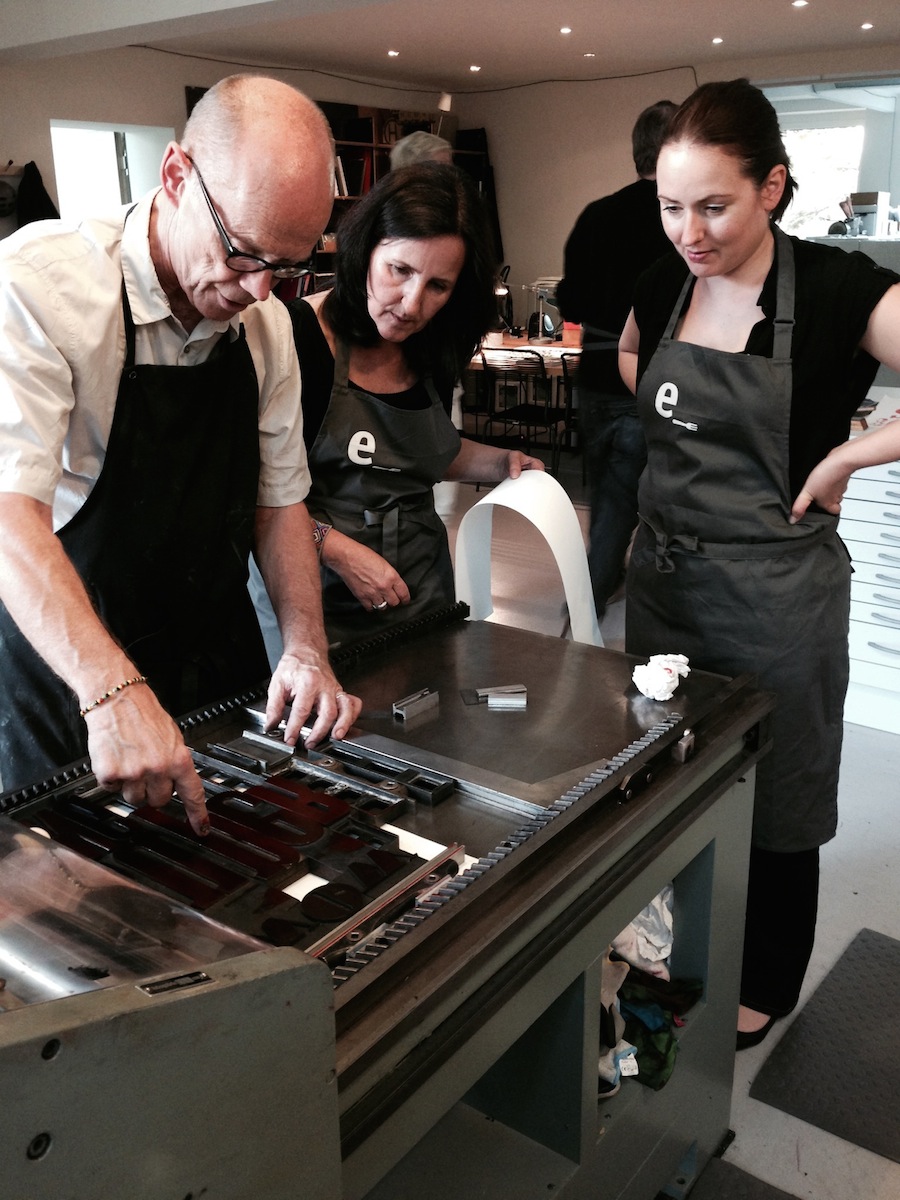
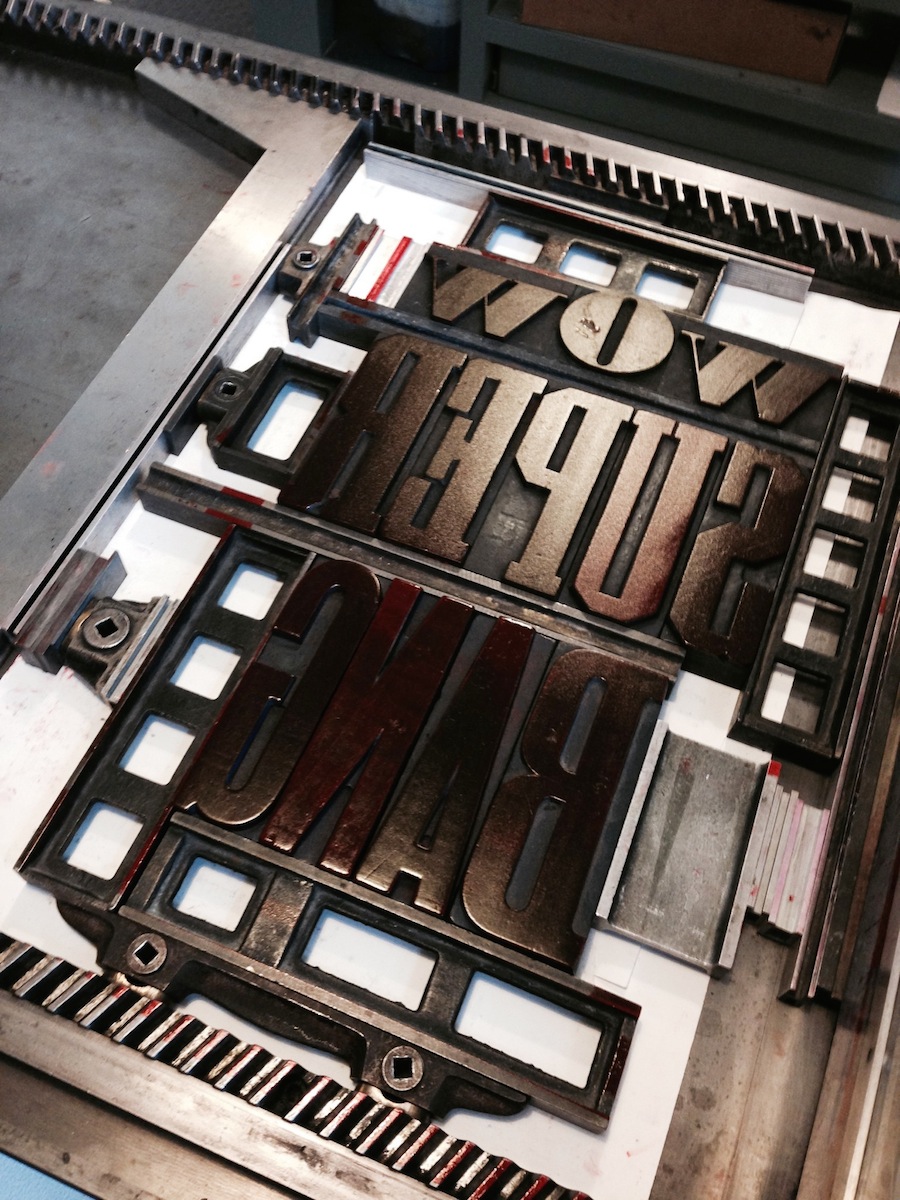
Once we gained a clear overview, enthusiasm sparked throughout the room. We were confident that our compositions of letters and metal pieces would result in the desired outcome. It should not take too long anymore for the first sample to sit on the drying rack. Only a few minutes later we were reminded that printing is a craft one has to learn a lot about.
Everything has to be reversed image. A twist to your brain. Easy, I hear you say. So did I and ended up with three lines where letters were reversed but words were not.
Then there is fonts having b and d, I and l, M and W designed in the most confusing way. This is the part you learn why type cases are well-sorted and that the bottom of a letter is marked. Good idea, huh?
As a German, I should have come up with a sentence making massive usage of consonants. Instead, the case did not have enough “i”s. And commas? How come this font doesn’t have any? “Commas are for kids”, says Erik passing by. So, the apostrophe? Indeed. And a lot of paper-thin spaces to keep that damn thing in place.
To top it off and shortly before “Done!”, the cleverly chosen galley did not fit into the available printing machine. Reset. This started to feel like work.
In between, the master helps, explains and hammers into place. We all know paper jam and it was not invented by laser printers.
Different to laser printers all printings are allowed to be unique. Be it ink application differing slightly depending on the material’s texture or age limiting a wooden letter’s capability to soak up color: it all adds to a nice appearance of imperfection.
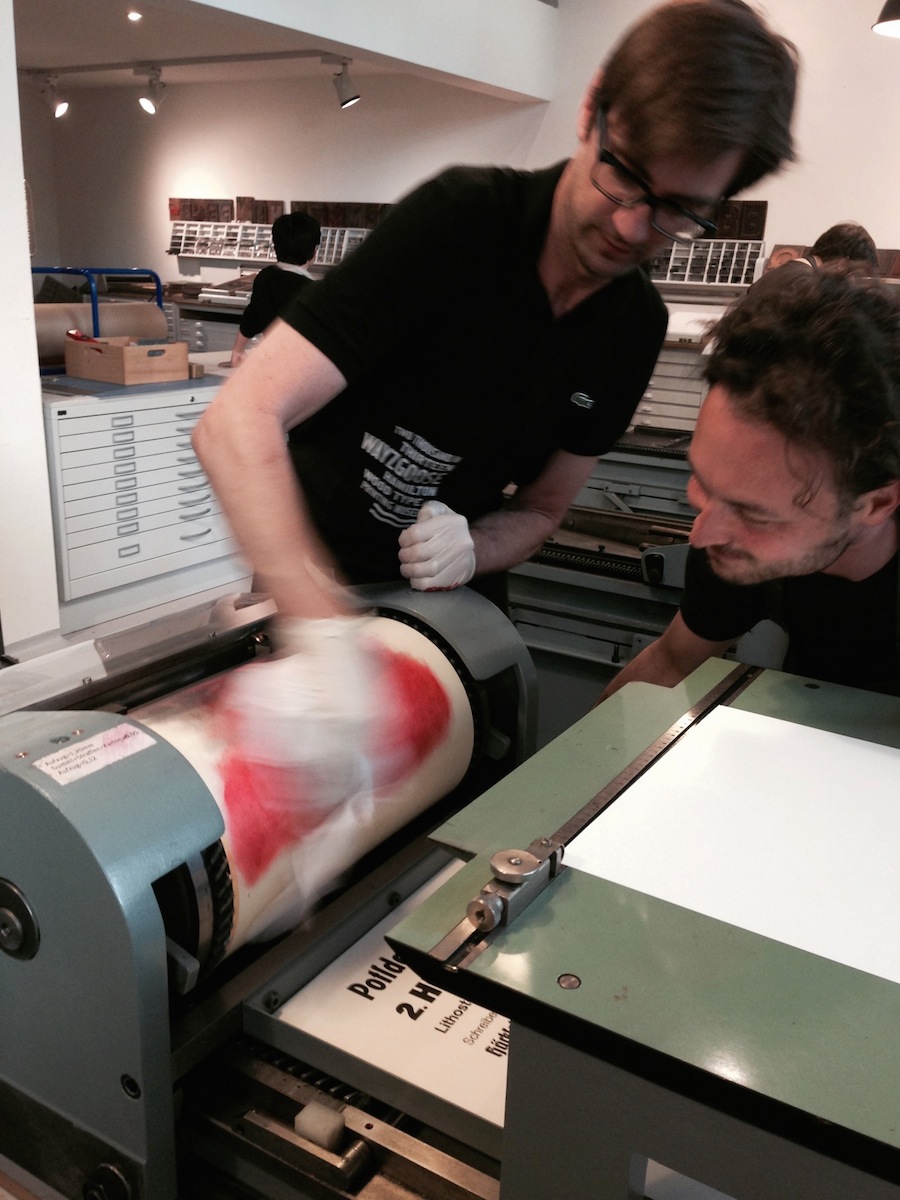
After some hoops to jump through, for a short run or at least without having to maintain the machines, it is a really nice and calming process. Doing without saving.
What remains is something real in hand; not just the result of typing on keys, but the result of your own handiwork.
And of course, we did clean up after ourselves.
